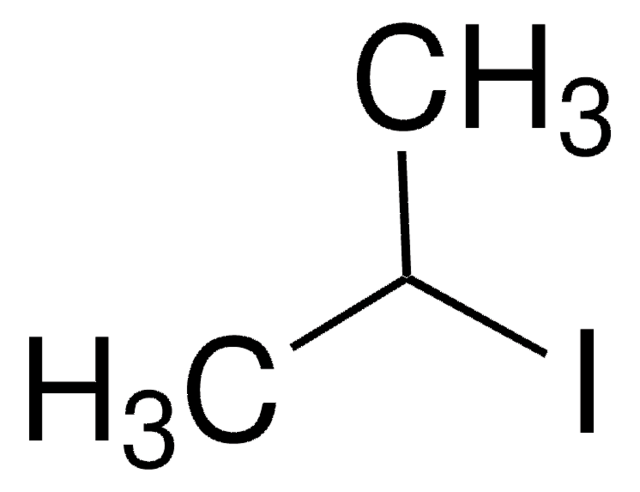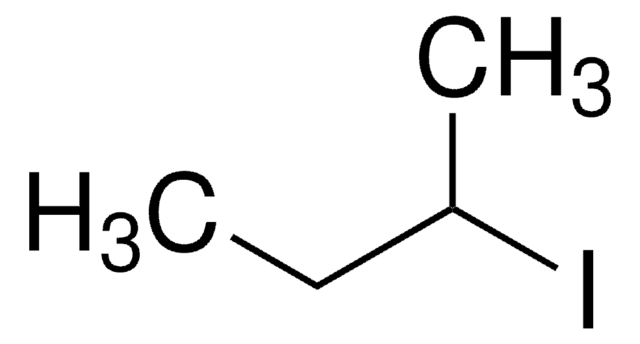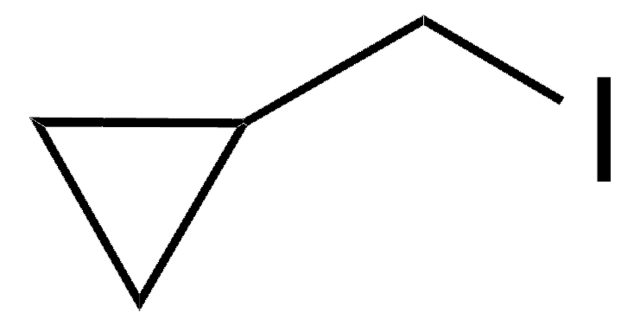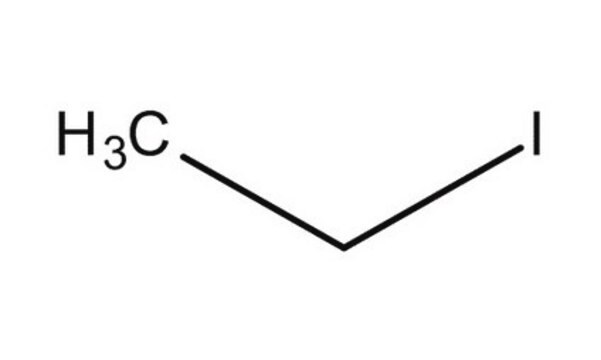171883
1-Iodopropane
99%
Synonyme(s) :
Propyl iodide
About This Item
Produits recommandés
Pression de vapeur
43 mmHg ( 25 °C)
Niveau de qualité
Essai
99%
Forme
liquid
Contient
copper as stabilizer
Indice de réfraction
n20/D 1.504 (lit.)
pb
101-102 °C (lit.)
Pf
−101 °C (lit.)
Densité
1.743 g/mL at 25 °C (lit.)
Groupe fonctionnel
alkyl halide
iodo
Chaîne SMILES
CCCI
InChI
1S/C3H7I/c1-2-3-4/h2-3H2,1H3
Clé InChI
PVWOIHVRPOBWPI-UHFFFAOYSA-N
Vous recherchez des produits similaires ? Visite Guide de comparaison des produits
Catégories apparentées
Application
Mention d'avertissement
Warning
Mentions de danger
Classification des risques
Acute Tox. 4 Inhalation - Aquatic Chronic 1 - Carc. 2 - Eye Irrit. 2 - Flam. Liq. 3 - Muta. 2 - Skin Irrit. 2 - STOT SE 3
Organes cibles
Respiratory system
Code de la classe de stockage
3 - Flammable liquids
Classe de danger pour l'eau (WGK)
WGK 2
Point d'éclair (°F)
111.2 °F
Point d'éclair (°C)
44 °C
Faites votre choix parmi les versions les plus récentes :
Déjà en possession de ce produit ?
Retrouvez la documentation relative aux produits que vous avez récemment achetés dans la Bibliothèque de documents.
Les clients ont également consulté
Global Trade Item Number
| Référence | GTIN |
|---|---|
| 171883-100G | 4061838751300 |
| 171883-PZ | 4061823608572 |
| 171883-5G | 4061838751324 |
| 171883-500G | 4061838751317 |
Notre équipe de scientifiques dispose d'une expérience dans tous les secteurs de la recherche, notamment en sciences de la vie, science des matériaux, synthèse chimique, chromatographie, analyse et dans de nombreux autres domaines..
Contacter notre Service technique


















